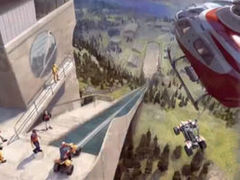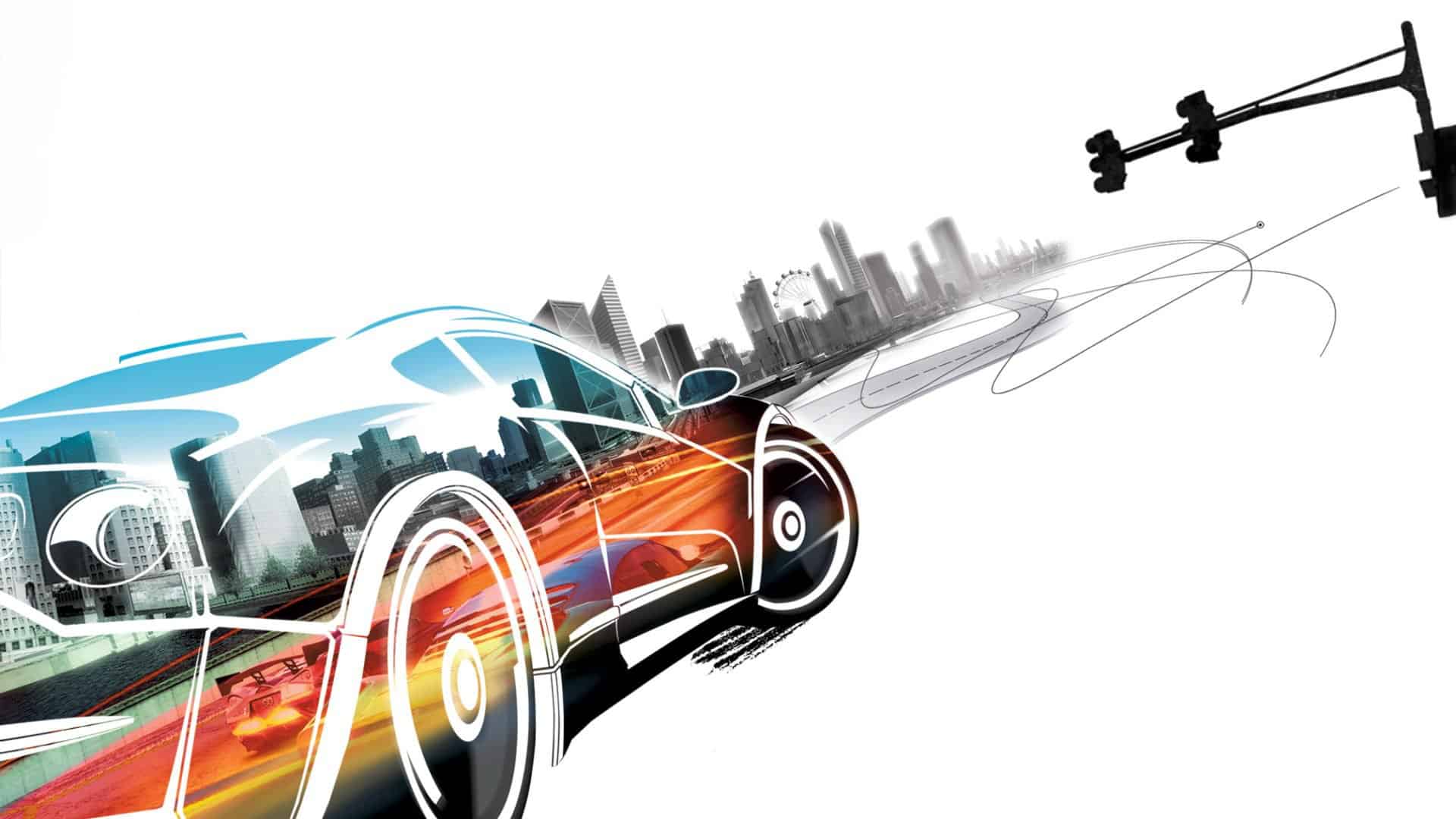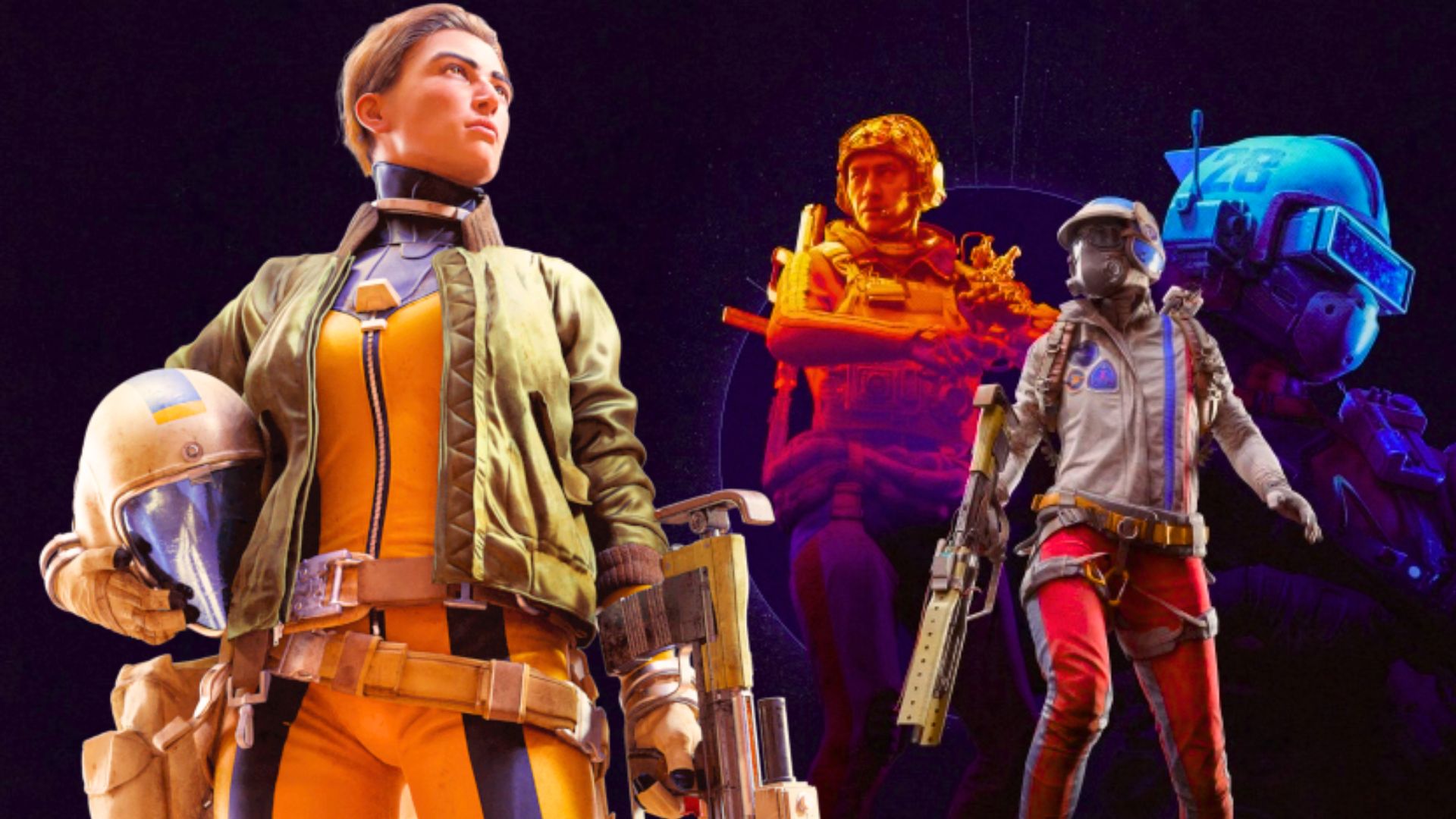You can trust VideoGamer. Our team of gaming experts spend hours testing and reviewing the latest games, to ensure you're reading the most comprehensive guide possible. Rest assured, all imagery and advice is unique and original. Check out how we test and review games here
Development on Criterion’s next project is still early. So early, in fact, that it doesn’t have a name or a release date, and the footage we saw yesterday doesn’t even have a game attached to it. “That wasn’t an announcement,” Criterion’s general manager Matt Webster says as the smoke settles on EA’s E3 press conference. “We’re shining a light onto the process that we do for people who love games, love making games and love the type of games that we make.”
But by offering fans a peek behind the curtains so early on, key questions about Criterion’s concept remain unanswered. Initial prototype videos point toward a first-person, open world extreme sports racer, but when I ask whether that’s a good indication of what to expect, Webster remains hazy.
“If you know anything about Criterion and you add multiple vehicles to that, then that gets you on a great starting point,” he says, before referring to the studio’s work on 2008’s Burnout Paradise. “If you take that spirit beyond cars… going on that through line is an awesome starting point.”
Helicopters, planes, ATVs, MX bikes and wingsuits all play a part in the project, Webster says, and as Criterion achieved with its earlier titles, one of the project’s aims is to fulfill the fantasy of controlling a vehicle stylishly and at speed.
“Clearly helicopters are insanely difficult to fly,” Webster says, “but in my mind, and this is where we were with cars, in my mind I can drive a 911 really fast. I can get it drifting and hold that drift round a corner in my mind, and that’s what we let you do with the games, we let you fulfill that control fantasy.
“The same applies to a wingsuit or a parachute, a plane, a helicopter, an ATV or an MX bike. If you look back to Paradise we put bikes in there, we had a plane knocking around there. We’ve been kicking around multiple vehicles for a long time, and now it just feels like it’s absolutely the right time to do it.”
/https://oimg.videogamer.com/images/87dc/criterion_new_ip_e31.jpg)
Besides building on ideas that have been simmering at the studio over the last few years, one of the greatest inspirations for the project – and indeed, one of the very reasons for it being a first-person title – is the recent popularity of GoPro cameras to capture the exhilaration of sport.
“Those cameras are becoming ubiquitous in the real world,” Webster says. “I was in Switzerland in February and there were kids as young as six wearing [them]. Teenagers are all over this s*** and it’s defining how the world sees particular types of action, and that’s the type of action that we love. So for us it felt, yeah, that’s the way we need to go.”
For the first time in a Criterion game the camera won’t be attached to the car, either, but a playable character who’s able to hop between vehicles and explore the environment on-foot.
“We’ve got a character for the first time and we’ll have some on-foot play as well,” says Webster. “We know and love vehicle-to-vehicle interaction; it’s our bread and butter, it’s the excitement and the action that people love. But we also think that person and vehicle interactions are really important and exciting.”
By placing an emphasis on an immersive first-person view and with the release of Oculus and Morpheus on the horizon, you can’t help but wonder whether VR could play a key role in Criterion’s plans for the project.
“This is the best Oculus game you’ve ever played!” Webster raves, before confirming that the team has been experimenting with VR on the project. “It’s new technology, that’s kind of what we do, right? And I am serious, it is [that good].”
/https://oimg.videogamer.com/images/1da1/criterion_new_ip1.jpg)
“There has been a massive change in how we want to develop games, rapidly prototyping something and concentrating on the gameplay, rather than coming in and dropping a 90-second pre-rendered movie of an idea and then coming back a year later with the gameplay interpretation of that,” Webster says, explaining why he chose yesterday to reveal the studio’s new project despite it being in such an early state. “Here we’re saying, you know what? We love games, we love making games, come on this journey with us.”
Whether that journey lasts one year, two years or ten remains to be seen, but however long the developer has in mind, Webster hopes to keep the community engaged through an ongoing dialogue of updates – and maybe even playtests – linked to the project.
“Clearly we’ve got a whole bunch of things that we haven’t talked about and we haven’t shown, and we’ve got a clear vision of the types of experience we want to make and how we’re going to go about making it,” Webster says. “What that end shape is going to be is still up for grabs, actually, and it’s still to be defined by us going out and about and talking to people. This is the start of something new that I fully expect us to continue in terms of getting people to come and play and tell us what you think. Whether we do that publicly for people to write and document or we do it privately because we want to engage people earlier than we have before, that’s for us to decide. But right now, this is step one.”
“Imagine where we’re going,” he concludes. “We will show you the game that we are making as we are making it. People have always wanted to get a handle on how things are made or wanted to connect with games earlier than ever before. Let’s give it a go.”
Burnout Paradise
- Platform(s): Nintendo Switch, PC, PlayStation 3, PlayStation 4, Xbox 360, Xbox One
- Genre(s): Arcade, Racing







